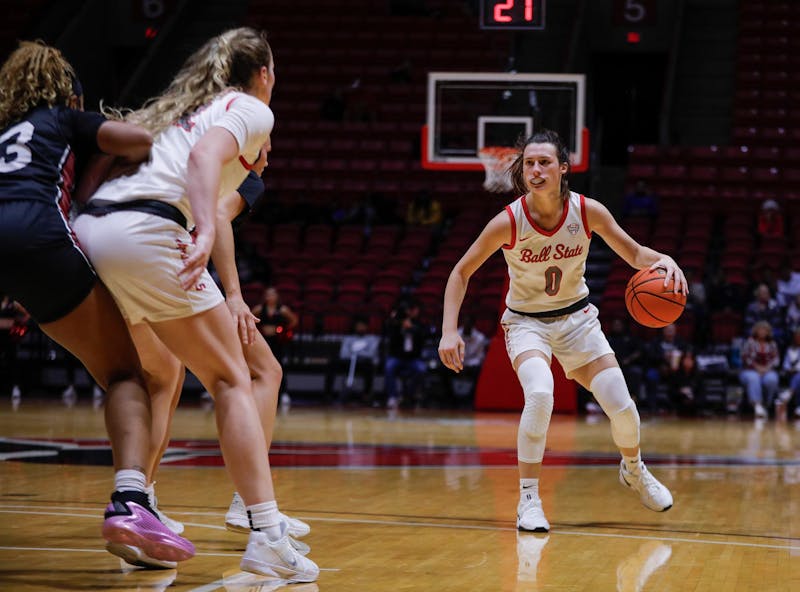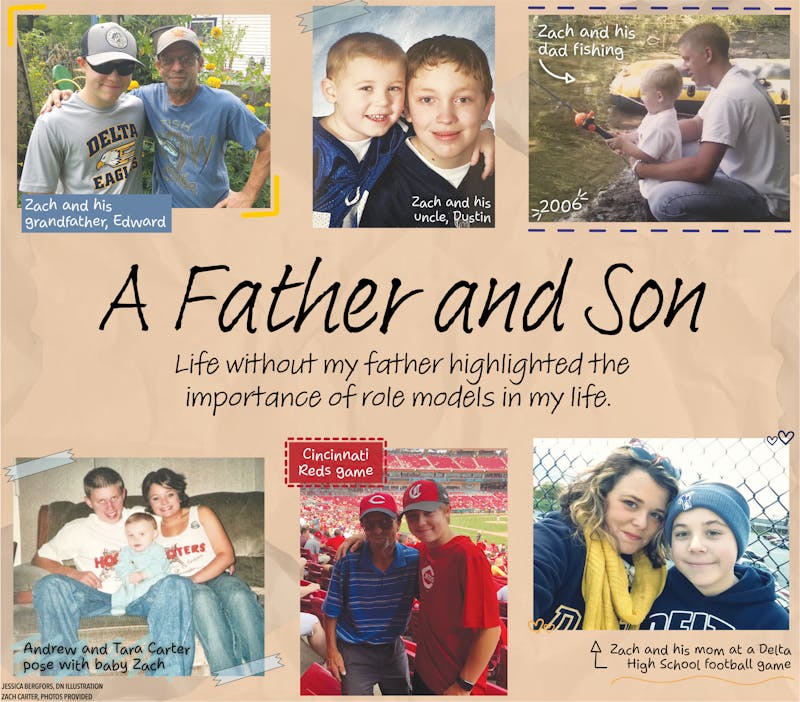The strum of a guitar, the hum of a voice and the steady beat of a drum makes more than just music. It provides a way for people to work through their emotions.
Kirby Gilliam, owner and founder of Plainsong Music Services in Anderson, Indiana, said she noticed music creates a safe space.
Before she became a music therapist, she taught choir and music education at Madison-Grant Jr./Sr. High School in Fairmount, Indiana, and Holy Cross School in Anderson.
While teaching, Gilliam said that students approached her about teenage pregnancy and abusive families. These interactions inspired her to pursue a career in counseling.
“I'm 22 years old,” Gillian said. “I have no idea how to handle any of this. I thought, ‘I need to go get more education.’ I went, thinking I was going to do a counseling degree, and then I learned about the field of music therapy, and was like, ‘Wait a second! This is counseling but using music.’”
After finishing her education, Gilliam decided to start Plainsong Music Services, a music therapy provider. At Plainsong she helps those diagnosed with mental disabilities, mental health issues, rehabilitation and geriatric dementia. Each patient’s care is unique and focused on their goals.
Plainsong uses different techniques: expressive, receptive, recreated and the ISO principle. Expressive music therapy is when the patient makes music. The receptive technique is when the therapist makes music and the patient listens. Recreated is when patients sing songs made by other artists. Finally, the ISO principle is when the music matches the patient’s mood, and through music, they shift the mood in a positive direction, Gilliam said.
“Music therapy is an evidence-based field, based and rooted in science and research,” Gilliam said. “If it didn't have the evidence base, it would be more like hippie-dippy and anecdotal … The why is [that] music opens up your entire brain — all of the pathways.”
Along with the evidence behind it, Gilliam said music therapy is rising in popularity due to it being “less invasive than some of the therapies that are out there,” as well as being a form of therapy that focuses on the patient’s abilities, not their disabilities.
“A lot of kids come to music therapy because traditional talk therapy doesn't work because the kids come in and they don't want to talk about things — they're resistant,” she said. “What is so cool about music is I can have somebody that doesn't speak come in, and we can speak through music. We can have full conversations through different sensory inputs.”
Listening to music activates the outside and inside parts of your brain, according to a 2011 study.
“We have three parts of our brain. Sometimes, if you have an intellectual disability, your frontal lobe is disconnected from your limbic system, and that sucks because your limbic system is your emotions,” Gilliam said. “With music, it connects that middle part of your brain to the front part of your brain so that you can process and have more executive functioning.”
Another worker at Plainsong is Hospice Coordinator Kinsey Lavy, who primarily works with geriatrics and individuals with intellectual and developmental disabilities.
“Music therapy can sometimes look like talk therapy, but, usually, music is used as a tool to address non-musical goals,” Lavy said via email. “For example, someone who needs to increase their gross motor skills may use the beat of their favorite song to increase their gait by walking to that beat.”
In her work, music can be used as a distraction for pain management or a tool to relearn and learn differently. Besides verbal communication, music becomes a different form of conveying emotions or to help broach memories for dementia patients.
Amy Hourigan, an associate lecturer of music education at Ball State University and music therapist, comes from a different background in music therapy. For Hourigan, she utilizes the practice with children, specifically those with disabilities.
Hourigan, a mother of sons diagnosed with autism, was first introduced to music therapy after taking them to therapy five days a week.
Before becoming a music therapist, she was an elementary music teacher. Discovering music therapy helped her reconnect with her love of music, as well as how it can help people.
Currently, Hourigan works at an autism clinic, Advanced Behavioral Consultation (ABC), in Muncie. She works with around 16 children while also teaching at Ball State.
At Ball State, she teaches education majors how to best teach students with disabilities. At ABC, a clinic that uses applied behavior analysis (ABA) — a type of therapy where the focus is increasing positive behaviors and decreasing negative behaviors — Hourigan works with her clients one-on-one, focusing on different goals.
“A basic tenant of music therapy is that everybody likes different things,” she said. “Everybody likes different styles of music, so we use what motivates them. A lot of the sessions are very different from each other.”
For example, Hourigan works with a boy who loves The Beatles. She incorporates music by the band into his sessions while working on him making choices with limited options.
In Indiana, there are currently over 250 board-certified music therapists, according to the Association for Indiana Music Therapists (AIMT).
AIMT is a non-profit organization focused on continuing education, spreading awareness and improving access to music therapy. Through its website, the organization helps people find music therapists with a “Find a Music Therapy Provider” service.
AIMT treasurer Kaitlin Kemp, Little Star ABA Therapy waiver services director, has experienced different sides of music therapy, having used it in the neonatal intensive care unit and when treating neurologic traumatic brain injuries among her patients.
Indiana Medicaid provides three waiver programs through Home and Community-Based Waivers, managed by the Division of Disability and Rehabilitation Services: Developmental Disability Waiver, Autism Waiver and Support Services Waiver, according to the American Music Therapy Association.
Most people in Indiana use waivers or private pay. When it comes to patients using insurance, they must pay out of pocket and apply for reimbursement, which isn’t guaranteed, Kemp said.
However, like Gilliam, she believes music therapy’s versatility — compared to other therapies like talk — is a strength.
“It is literally from pregnancy because we use music therapy [in] assisted childbirth … from pregnancy all the way up to end-of-life care and hospice,” Kemp said.
Contact Hannah Amos via email at hannah.amos@bsu.edu or on X @Hannah_Amos_394.





The Daily News welcomes thoughtful discussion on all of our stories, but please keep comments civil and on-topic. Read our full guidelines here.